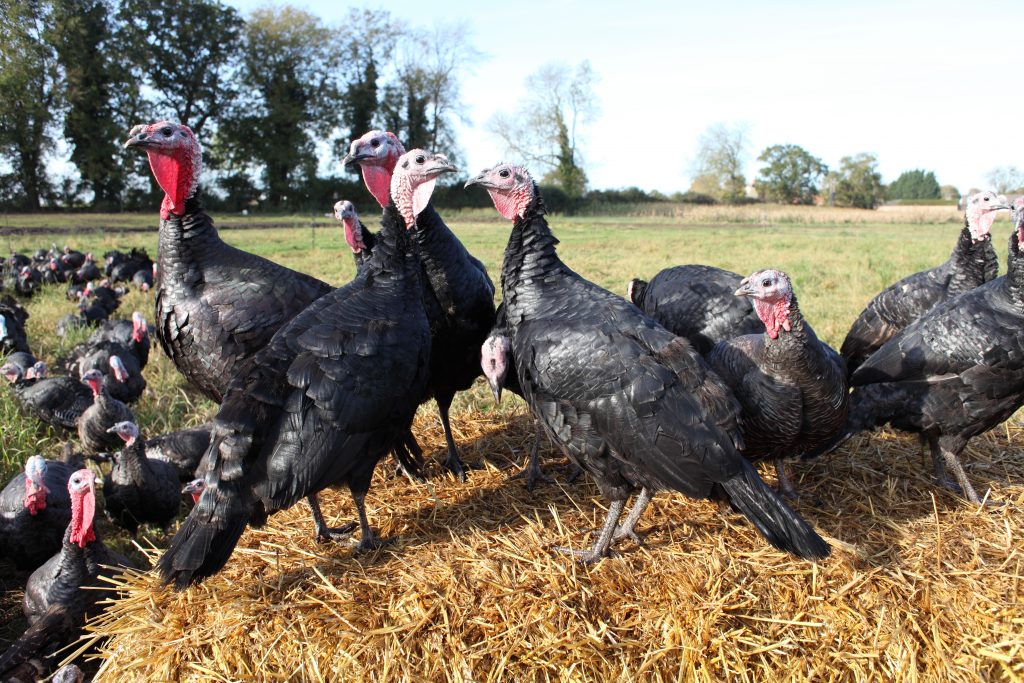
Does organic turkey taste better?
Those who are well organised, know around the start of October is the time to be ordering your Xmas turkey, from your local family butchers or farmer’s market.
For many the choice whether to buy organic or free range turkey is not much of a consideration – it often comes down to the beliefs of the individual.
But for those who are undecided and simply looking for the best possible turkey for their Christmas dinner, you’ll probably be wandering which is the better?
Does organic turkey taste better than free range?
Is it worth the premium price?
What is the difference between Organic and Free-Range?
Both types of turkeys are reared in ‘free-range’ environments; where the birds are allowed to roam freely across designated farmland areas and have open hen-houses where the birds can shelter at night (so no cramped and uninhabitable cages that lead to a bad quality of life and low quality meat)
The difference comes in the feed that the turkey is given throughout its life:
Organic Turkeys are fed 100% Organic Feed whereas Free Range turkeys are fed on home grown cereals and vegetable protein sources.
Both types are never given antibiotics or additives for growth promotion; in accordance with the strict rules of the British Traditional Farmfresh Turkey Association (TFTA).
The extra cost of rearing Organic Turkeys is because the price of their Organic bird feed is typically around £100 more per tonne than Free-Range bird feed; so that is reflected in the end price that the consumer will pay.
At the end of the day, some people buy Organic because they believe in it, not necessarily because of taste.
What we here at Morton’s charge for a free range turkey at £55, we would have to charge £65 for an organic bird to cover the extra costs of feed.
Does the choice of rearing affect the ‘turkey’s meat’ quality?
Having reared both organic and free range poultry, personally we don’t think so as the birds are treated the same.
We’ve always reared our turkeys in the conventional free-range way at Morton’s although we have reared Organic Chickens and Turkeys in the past.
All the birds have a high quality of welfare, given plenty of space to roam about, and are housed in open barns not small little sheds.
We abided by Freedom Food Standards for both Chicken and Turkeys.
Our birds are given 24 hour access to range so they’re not cooped and shut up at night, we work on at least 4m squared area per bird for outside space, but obviously the birds are given the freedom of all the land to roam.
The birds are given full growing time; to grow to their natural full weight; reared on our open paddocks and slaughtered on site, which means the birds are not packed into crates and loaded onto lorries, and distressed by travelling long distances.
We take them slowly from the fields, to the farm building where they are gathered in small pens and stunned. They are then dry plucked and then hung in our cold store for a couple of weeks before being ready for customers.
So the welfare and quality of life for both types of turkeys is the same (on our farm, at least!), although some people believe they can taste the difference between organic and free range which may be affected by what the stock was fed.
Our free-range birds are fed mainly on our own home grown cereals whereas organic birds are fed 100% organic feed, and we saw little difference in the size or quality of the bird’s meat when we tried organic turkey rearing for one year.
We believe that our free-range Turkeys are just as good as organic Turkeys and that at the end of the day, it is the personal choice of the consumer whether to buy free-range or organic turkeys.
Hopefully this helps answer all of your questions as to what Turkey to go for this Christmas.
With our delicious selection of Turkeys, you’ll be able to choose form our Bronze Turkeys, Black Turkeys, or even select from our range of turkey crowns for sale. Simply head over to our online shop to choose the perfect turkey for your Christmas dinner.
